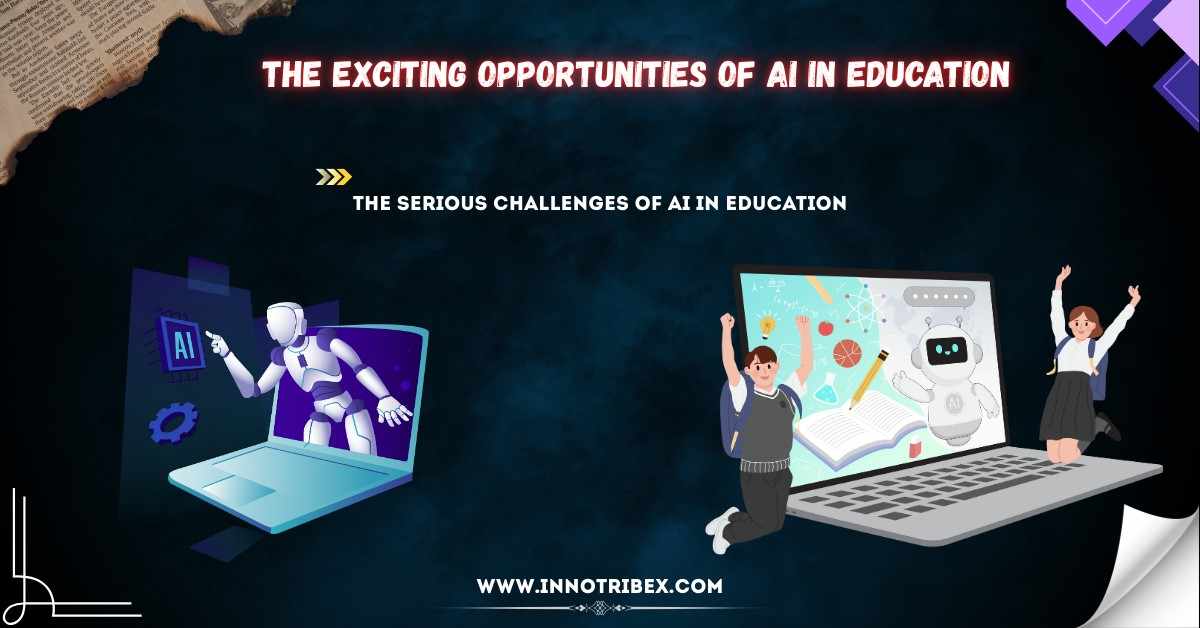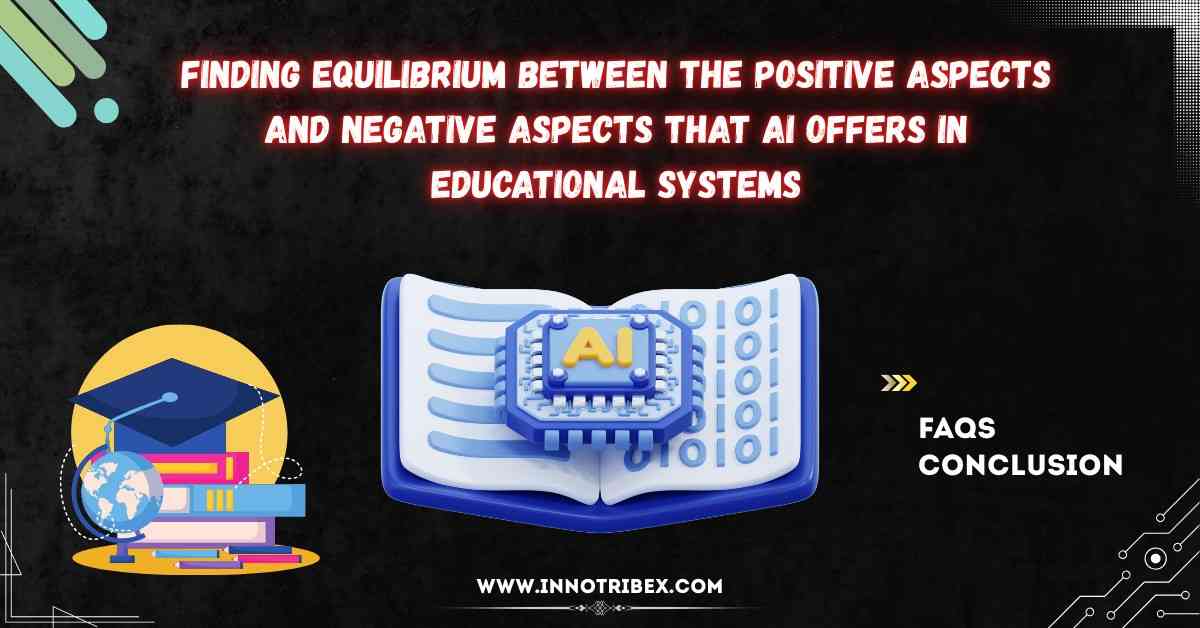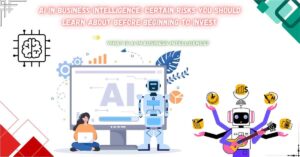Advanced Education brings numerous desired improvements to learning environments. Artificial Intelligence enables teachers and students and educational organizations to use its capabilities for enhancing our education system. AI education generates exceptional chances yet confronts multiple serious obstacles that need proper attention to resolve. This article evaluates the promising educational advantages together with the possible issues that emerge from using AI in education. A plan to achieve optimal learning results through proper balancing between these two aspects will be presented.
What is AI in Education?
The application of artificial intelligence technologies within education results in the term AI in Education. AI functions through multiple delivery systems which include smart tutoring systems, adapted educational sessions and computerized grading mechanisms and continuing other educational services. Through AI educational purposes the entire learning process works to create interactive educational content while delivering specific programs that support the needs of students as individuals.
Education transforms through AI technology because it performs monotonous work activities and creates individualized educational progressions and generates educational analytics about how learners do. The system enables learners to proceed at their individual speed and lets them reach different learning resources which enhances their entire learning journey.

The Exciting Opportunities of AI in Education
1. Personalized Learning Experience
The most exciting educational opportunity given by AI refers to personalized learning approaches. Classroom instruction usually moves forward at one speed for the whole student group. All learners exhibit different learning speeds when it comes to academic material. The learning experience becomes specifically designed to match individual student requirements due to the help of AI technology. Artificial intelligence uses student learning patterns as well as strengths and weaknesses to generate personalized lesson plans and customized assignments together with personalized feedback. The outcome enables students to achieve better learning performance because they follow individualized educational paths.
Further reading suggestions:
2. Intelligent Tutoring Systems
Intelligent tutoring systems represent an additional advantage that AI offers to educational settings. The AI-powered tutors enable students to get dynamic instructional support in their academic challenges. An AI teaching program can supply students with explanatory hints when they face challenges in math problems to improve their educational outcomes about the subject. The educational system maintains additional educational access after classroom time to prevent students from falling behind their classmates.
3. Automated Grading and Feedback
Teachers spend many hours grading assignments due to large student numbers in their classes. The educational use of AI maintains automatic assessment capabilities which quickly evaluate student work such as assignments and tests as well as quizzes. Teachers gain additional teaching time through this system because administrative duties become faster and more streamlined. AI systems deliver immediate insights to students about the errors they make which also show them effective improvement strategies.
4. Access to Educational Resources
Students use AI to gain access to multiple educational resources that promote their learning. Virtual assistants that employ AI technology identify suitable materials such as articles and videos and academic exercises to help students understand challenging subjects. Students gain access to digital resources through any time and any place location thus providing flexibility in their learning schedule.
5. Predictive Analytics for Student Success
Artificial Intelligence produces student performance prediction abilities for educational institutions. The educational application of AI conducts predictive assessments to find students who show signs of failing their academic performance. AI identifies students who require supplemental assistance through its analysis of student actions and academic performance and participatory behaviors. The warning system enables teachers together with administrators to start taking early preventative actions for students who need assistance.
The Serious Challenges of AI in Education
Education faces multiple difficulties as a result of implementing AI systems despite all its advantages.
1. Lack of Human Interaction
AI education faces its biggest obstacle when it threatens to abolish essential human elements in teaching practices. The emotional mentorship along with personalized teaching capabilities which teachers bring cannot be substituted by artificial intelligence. Human connections between students and their teachers remain essential for their social growth together with emotional development. Excessive AI dependence creates obstacles in student-teacher relations because this separation leads to isolated feelings along with diminished enthusiasm among students.
2. Privacy and Security Concerns
The data-management requirements of AI systems mandate admission to personal information and educational documentation as well as student behavioral components. Students face significant privacy risks because of the unrestricted access to their sensitive information. These data points remain vulnerable to misuse or theft whenever proper protection measures are absent. Educational institutions need to verify that their AI systems maintain program protection together with respect for student privacy regulations to defend student information.
3. Equity and Access
AI in education produces different access opportunities for students depending on their availability to necessary technology. Individuals who come from financially disadvantaged situations and residents in non-urban populations often lack access to fast internet and contemporary gadgets. The current lack of digital access creates an expanding separation between students who receive benefits from artificial intelligence education and those who do not. AI education must be accessible for all students because this accessibility ensures equity can be achieved.
4. Dependency on Technology
The educational use of Artificial Intelligence depends on technological systems which present the risk of interrupting class learning when technology experiences issues. Educational institutions must develop plans to support technical infrastructure which handles potential operational issues. Students have a reduced ability to handle problems through critical thinking and problem-solving when they depend intensely on technology.
5. Ethical Issues
Several important ethical questions emerge in education from the use of AI regarding biases found in AI algorithms. The unfair treatment of specific student groups may occur when AI system training data includes bias. AI systems frequently tend to give students from distinct background segments preferential treatment that generates unfair educational opportunities. It is essential to resolve ethical matters so AI operates with fairness as well as responsibility.

Finding equilibrium between the positive aspects and negative aspects that AI offers in educational systems
Educational establishments should use AI carefully by managing its prospects against its notable difficulties for best results. Implementing these strategies will establish that balance between AI benefits and drawbacks:
- AI supplements educational processes through human-AI teamwork although teaching staff should always maintain their essential role in instruction. AI functions best as an aid tool for teachers instead of replacing their dedication to student education. Teachers can implement AI systems to execute automated grading procedures while creating individualized instruction formats which enable them to sustain their supervisory teaching duties.
Further reading suggestions: PHP Vulnerability: Everything You Need to Know to Stay Safe (Complete Guide)
Every student needs access to AI-driven education so schools should invest into building infrastructure systems which enable AI technology implementation. Schools must supply devices to students while improving web connectivity together with developing educational training opportunities for students and teachers.
- Educational institutions need to establish data protection strategies which guarantee student information safety. The protection of student data requires both private data regulations compliance from AI systems along with secure platforms for processing student information.
When developing AI models for training the developers need to protect fairness and prevent biases by using datasets which represent diverse populations. Institutions of learning must disclose their AI utilization methods to their stakeholders in addition to allowing them to participate in important decision-making processes.
FAQs About AI in Education
What is AI in Education?
The implementation of artificial intelligence technologies for educational improvement constitutes AI in Education. These are several ways AI assists educational settings including personalized learning together with automated grading and intelligent tutoring systems on the list.
The way AI delivers customized student learning programs functions as its key principle.
The technology reviews student performance data to produce distinctive student-oriented educational paths. The system uses collected student data to adjust instruction content as well as assignments and feedback in order to create more personalized and successful learning components.
Can AI replace teachers?
No, AI cannot replace teachers. AI provides help with grading and personalized education but lacks the ability to supply emotional support and mentorship which teachers offer to students.
Schools need to understand the possible security threats that AI brings to educational environments.
The management of student-related sensitive data by AI systems creates challenges regarding both security protection and privacy protection of this information. AI systems in educational institutions need to meet privacy requirements through secure platforms that secure student information.
Which students receive benefits from AI educational programs?
AI education remains inaccessible to students in low-income and rural communities to the same degree as other students. The digital divide needs bridging because it ensures all students will obtain AI educational benefits.
Academic institutions need to address the moral challenges involving artificial intelligence systems in educational settings.
The main ethical concern stems from biased AI algorithms since they might cause unfair treatment of students. AI models require training with diverse data and AI systems need to be properly managed through fair and ethical practices.
School institutions must establish methods to manage AI’s advantages against its difficulties.
Schools should implement AI to enhance teaching staff while building adequate infrastructure and safeguard student privacy together with responsible AI operation standards.




Pingback: Google Pixel 9a Review: Best Budget Phone of 2025
Pingback: AI Startup Mercor Funding Surges with Massive $3M Victory